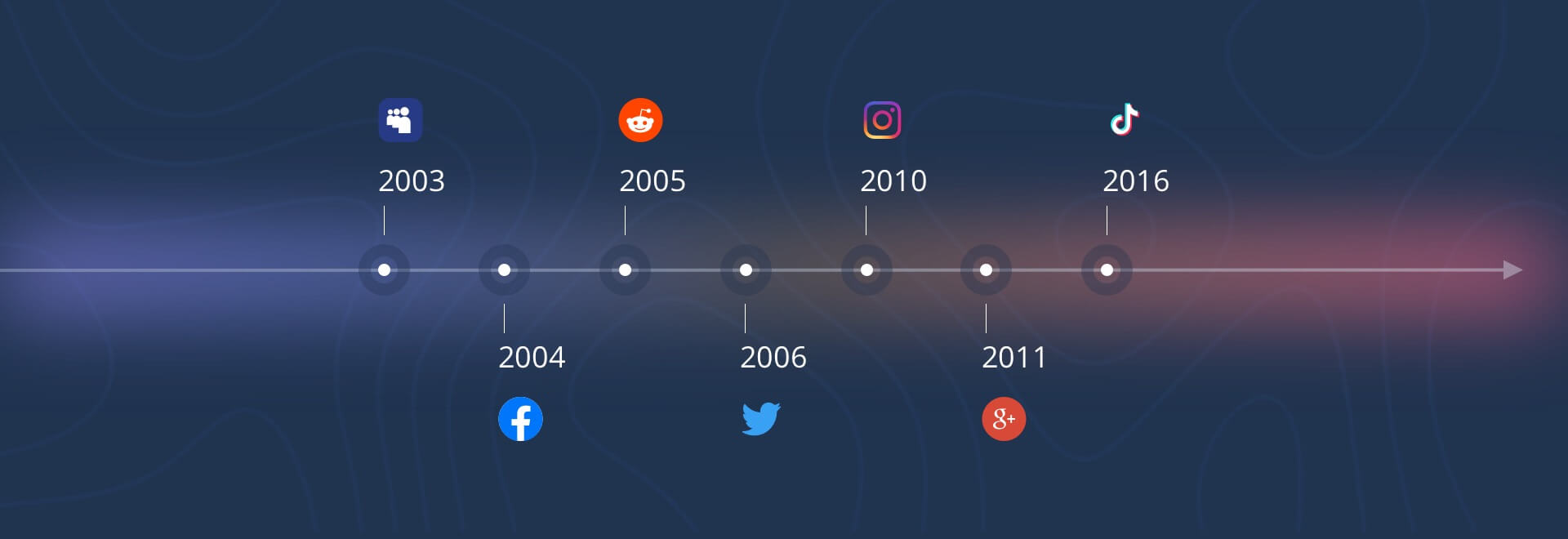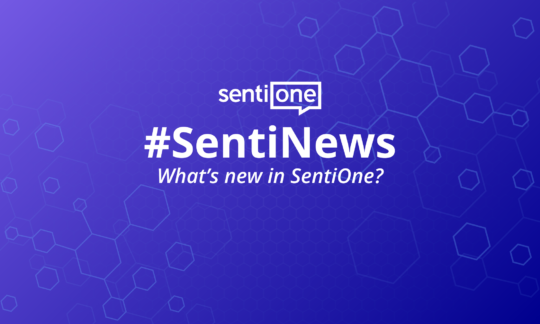10 years of SentiOne — our evolution alongside social listening
You’re reading that right — SentiOne is officially ten years old. It’s incredible how much our company has changed since its humble beginnings! What started as an after-hours project by a trio of students is now a company with offices all over the world, serving hundreds of clients! Not bad for a small startup from Poland.
In this article we’re going to take a look back at our history. From our earliest beginnings to the present day, we have a lot to cover — let’s get started, then!
A brief history of social listening
The story of SentiOne is inextricably linked with that of social listening. Nothing exists in a vacuum, after all, and our company exists because of the decades of work that came before us. To quote Isaac Newton (or Oasis, if you prefer), we’re standing on the shoulders of giants. It is prudent, then, to spend some time examining social listening and how it came about.
The Web — remember when we still called it that? — was a wildly different place in the 1990s. Originally, it was simply static pages, mostly driven by text, with an odd image here and there. Javascript wasn’t even a twinkle in Brendan Eich’s eye. Interactivity didn’t exist, and even if it did, it would probably be too much for your 14.4k modem to handle.
What’s more, there weren’t any search engines, not at first. This meant that if you wanted to “search” the web for information, you had to map it out and trawl through it yourself. Web directories, such as Yahoo! and DMOZ helped, but not by much.
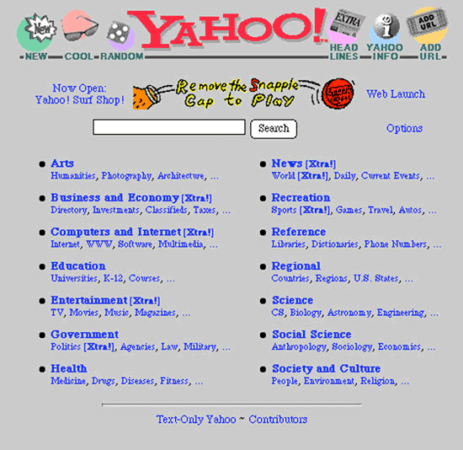
It was at this early stage that social listening got its start. Granted, it wouldn’t be called that for years — social media as we know it didn’t yet exist, after all — but the principles were already in place. We could collect mentions for a given keyword from Usenet. We could do limited amounts of web trawling.
Things got supercharged once the Web gained mass adoption and once powerful search engines like Google entered the fray towards the end of the 90s. The barrier to entry for the internet lowered significantly, and that resulted in new forms of online communication: chatrooms, forums, instant messaging — even publishing your own website became a matter of learning HTML in an afternoon.
Tied to this were rapid increases in the computing power of consumer- and business-grade hardware. Suddenly, it became feasible to go through large datasets without having to invest in a large server farm.
All these factors led to what we used to call “Web 2.0” — a trend of websites and platforms filled with user-generated content. Think del.icio.us, Flickr, RSS feeds and open APIs everywhere. Websites were filled with user-generated content and they actively invited users to play with their data.
It became clear that there’s an important market in collating and making sense of this treasure trove of information. The explosive growth of social media platforms like Facebook and Twitter only intensified this rush to sift through all of the data on offer. Social listening pioneers rightly surmised that there were valuable insights to be found here — we only needed to figure out the correct approaches.
SentiOne enters the scene
This is where SentiOne entered the picture. Co-founder Bartosz Baziński (COO) started the company in his actual garage during his third year at university, in 2011, alongside Kamil Bargiel (CEO) and Michał Brzezicki (CTO).
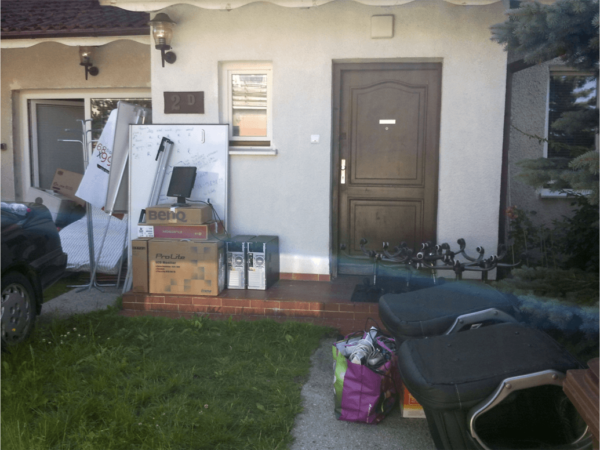
Initially, our service served to demonstrate the potential of sentiment analysis. More importantly, we were extremely small-scale! We monitored only the main social media platforms and some key websites, and only in Polish. At that stage, the primary focus was on demonstrating the value of social listening and analysis to investors and potential clients.
Facebook and Twitter were our mainstays, of course, as were the main news sites in the country. Polish readers might also remember Grono as well as Goldenline — the latter being especially popular for employer branding. Adding Nasza-Klasa support was also a big get for our fledgling company. At the time, it was still the #2 social platform in Poland, having just lost its throne to Facebook.
Another big success was adding Instagram support in 2013. This happened during Instagram’s explosive growth in popularity, just before its acquisition by Facebook. We were in the right place at the right time — we were among the first in Poland to support the platform, and it was surging in popularity on our market.
Sentiment analysis proved to be an incredibly important and valued tool. We proved ourselves capable of detecting PR crises before they happened — something very much appreciated by our clients. The brand managers we spoke to during this time uniformly noted how nice it is that they didn’t have to pay 24/7 attention to their social profiles anymore.
We didn’t rest on our laurels, though. There was work to do, after all! We focused on providing our clients with even more useful features. We launched our automated alerts and advanced reporting features to capitalize on what our clients already liked about our platform.
What truly made us stand out from the competition, however, was our complete lack of limits — clients could (and still can!) monitor as many keywords and mentions as they please.
Analytics galore
Encouraged by these early successes, we expanded our scope significantly. Sources became the new gold — we couldn’t add them fast enough!
We also took our first steps abroad and opened our services to clients from Czechia. Supporting another language was a big step for us. After all, up to this point we only ever supported the Polish market. Our platform, however, was always built up with expansion in mind. Because of this, we managed to expand to the Czech market relatively painlessly.
While we continued to refine our existing features, we also delivered new functionalities. One of these was the Tagger. It allowed our clients to help train our algorithm for their specific niches by assigning custom semantic tags to every mention. It proved to be such a popular feature that we kept SentiOne 1.0 alive for it all the way into 2020, long after the rest of the old platform was depreciated.
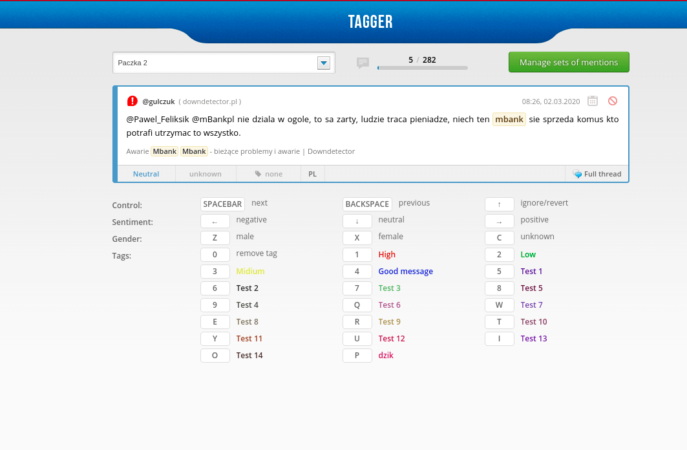
FMCG brands in particular found it useful. Each business branch operates in its own context — the Tagger allowed them to train the algorithm and detect crises specific to their niche.
During this time, we enjoyed a wealth of information from the platforms we monitored. Data protection laws as we know them didn’t yet exist, after all. Anyone was able to monitor any public profile, as well as any open Facebook group or any given Instagram account or post. This proved overwhelming for many would-be social analysts, which is why we doubled down on analytics.
Providing an easy to understand interface that collated massive volumes of data was essential. We accomplished that — and more! Thanks to the experience we gained building our sentiment analysis algorithms, we were able to leverage machine learning to provide qualitative analysis of truly large datasets. This gave us the competitive advantage we needed to expand all over the world.
SentiOne conquers the world
Our momentum allowed us to expand to more international markets. English language support made it possible for us to expand to the USA and the UK — which we did, adding thousands of English-language sources in the process.
Quora and Reddit were the key sources we added. These two sources proved to be extremely important for our newfound international clients. We also started processing discussion forums and other similar sources to bolster our already impressive portfolio.
This push towards international clients also necessitated changes within the company. We started hiring our first employees abroad to handle specific markets. We opened our first office outside of Poland, in Prague. It would soon be followed by Budapest, Munich and eventually, Mexico City.
Most importantly, we also adjusted our platform to better serve our clients. One of them was present on sixteen different markets — and wanted to compare them and collate all of the data from them, in one app. It was a serious challenge, but we succeeded. It paid off, too — the client is still with us 😉
We also continued to expand to other languages. While we faltered in our Vietnamese implementation, this period is when we gained the distinction of being perhaps the only social listening platform with Papamiento support!
Social media changes irrevocably — the Cambridge Analytica scandal
In 2016, Cambridge Analytica used the data of over 87 million Facebook users — collected without their consent — to provide “insights and guidance” to Donald Trump’s presidential campaign. This misuse was reported in early 2018 and triggered a landslide in the social media landscape.
This was the wake-up call for anyone who hasn’t paid attention to Edward Snowden’s 2013 leaks. Suddenly, all of us realized just how much information was being collected about us by big corporations without our knowledge — and what this information could be used for!
Facebook’s fortunes turned overnight. The company suffered an image blow from which it arguably never really recovered.
At the same time, the European Union was gearing up to implement its new General Data Protection Regulation — a privacy law meant to protect customers precisely from being exploited by companies like Cambridge Analytica.
Threats of legal action and the need to comply with new regulations forced Facebook to change the way it does business — and these changes reverberated throughout the entire industry.
Suddenly, nobody was permitted to access individual users’ data. Facebook groups were made all-but-inaccessible. Many options were locked behind an authorization system. Monitoring public profiles was only possible for those who actually owned said profile. We wrote about all of the upcoming changes at the time.
Similar changes affected virtually every online platform: Twitter, YouTube, Instagram all followed suit and significantly cut down the types of data users could retrieve from the API.
SentiOne took these changes in stride. We always made a point of complying with regulations and laws and handling any user data in a safe and responsible manner. This helped us anticipate and adjust to the new reality relatively painlessly. We’re pleased to say that our customers appreciated our efforts and clear communication during this transition period.
React and Automate
We caught on pretty early on that for our clients, merely collecting and analyzing their mentions isn’t enough. Sometimes, there’s that one mention you’d like to respond to. Perhaps a client is talking about a fault they discovered in one of your products — wouldn’t you like to instantly get in touch with them and sort out the situation? As it turns out, that’s one of the primary reasons companies get into social listening in the first place.
Naturally, we try and accommodate as many use cases as possible. This is why we deployed several features to make answering social media posts and comments as easy as possible. This eventually culminated in us launching a second product, SentiOne React.
React solves several problems that our customers pointed out to us. More than anything, they despised having to constantly switch between different platforms. They’re right — “context switching” tires out our brains like nothing else! To us, the solution seemed obvious: we’re already collecting mentions from thousands of sources in one place — why not allow replies from the same interface?
This led us down a path of constant iteration and improvement which resulted in React becoming one of the leading omnichannel customer service tools on the market.
While working on React, we also started coming up with ways to leverage our AI and machine learning expertise. Could we somehow improve customer service? Perhaps we could do something about the tediousness of the work?
The answer was automation. SentiOne Automate, our fully-featured chatbot and voicebot platform began life as a way to combine all of our strengths as a company in one product. Our work on sentiment analysis led to the creation of one of the best-performing intent detection algorithms in the world. From there, building natural language understanding technology was a logical next step.
In a brief couple of years, we went from simply collecting mentions to offering a robust automation solution that can significantly reduce call center load, as well as an extensive set of tools for customer service specialists. We did this all by continuously reinforcing and building on our core strengths.
Not bad for a small startup from Poland.
SentiOne continues to expand
This is how things stand ten years later. SentiOne grew into a truly multinational company servicing markets all over the world. We went from a simple mention aggregation tool to a fully-featured social listening and customer service automation platform. Our services are appreciated both by massive, multinational clients as well as startups and small businesses alike.
So what’s next for SentiOne? We’re constantly growing and expanding our business interests. Last year, we took big steps to enter the MENA market. We’re also constantly innovating on our core products to better serve our existing customers, as well as attract new clients.
2022 is going to be an exciting year for SentiOne — and we’d love it if you joined us on our journey. If you haven’t yet tried any of our products, get in touch with us to schedule a demonstration!
